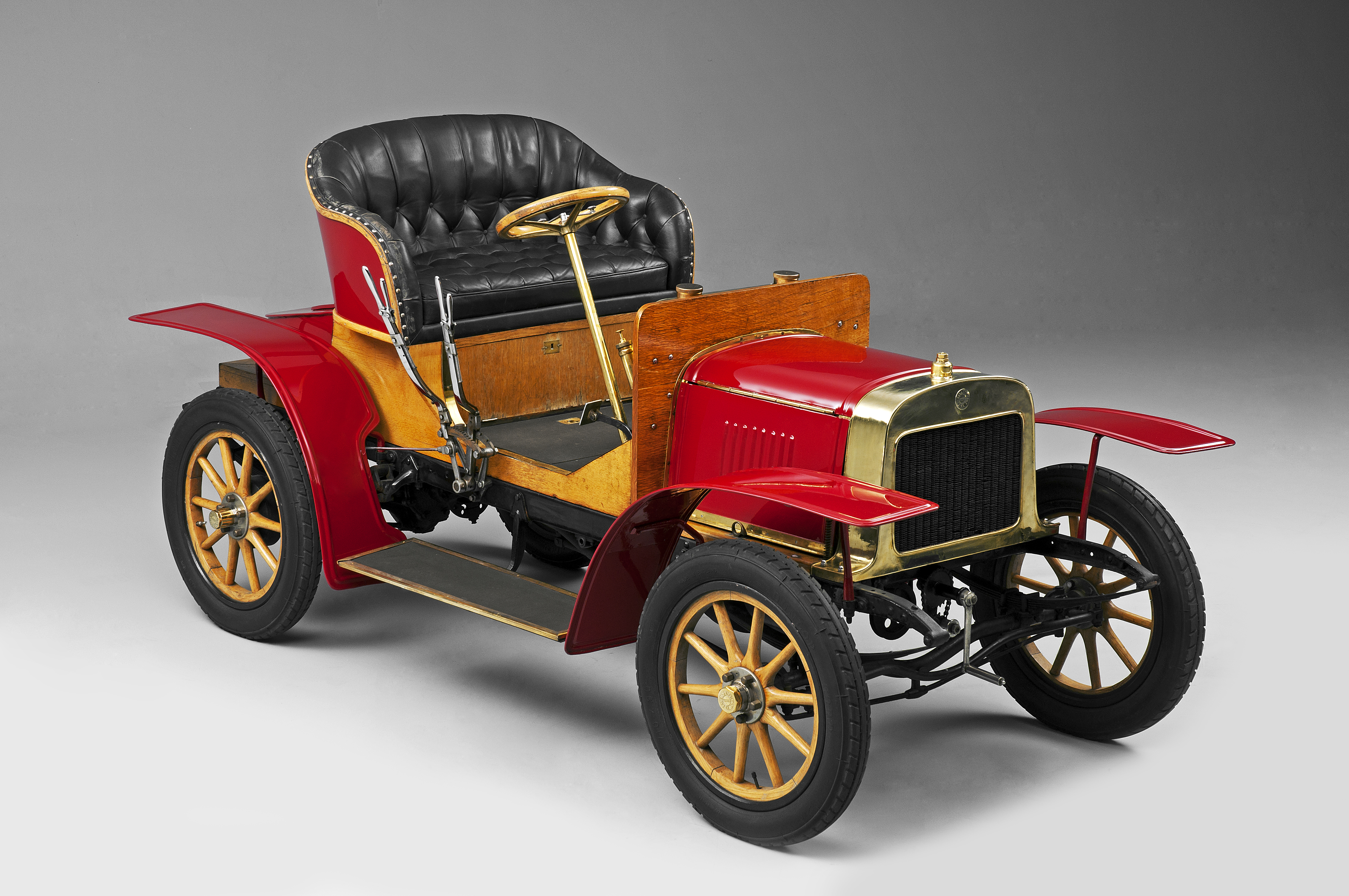The VOITURETTE A didn’t have much of an interior, as it was an open-sided automobile for two people. The “interior” design was in line with the aesthetics of the early twentieth century, so the seat was a proper, leather-upholstered "coachbox”, with a generous amount of wood and other natural materials, both functional and aesthetic rivets and, on most models, exterior red metal plating.
It would not meet present-day requirements, of course, but in its attitude towards quality of materials it is entirely comparable to the way we view automobile fittings today. “It beautifully illustrates the enormous progress that has been made by both the automotive industry and society as a whole over the last century. Having said that, as a designer I can see that a lot of passion, effort and care went into it. Just like what we do today, in fact,” explains Oliver Stefani, ŠKODA chief designer, how he sees the VOITURETTE A.
 The first car from Mladá Boleslav was manufactured in 44 units
The first car from Mladá Boleslav was manufactured in 44 units
The VOITURETTE A’s success was not restricted to its domestic Austro-Hungarian market – like its two-wheeler Laurin & Klement forerunners, it was sold in Germany and other countries. Forty-four of these automobiles were produced from 1905 to 1907. Only a handful have survived to this day. You can find an original specimen in the permanent exposition of the ŠKODA Museum in Mladá Boleslav, or at the National Technical Museum in Prague, whose VOITURETTE was a personal gift from Václav Klement, the company’s founder, in the 1930s.
















































